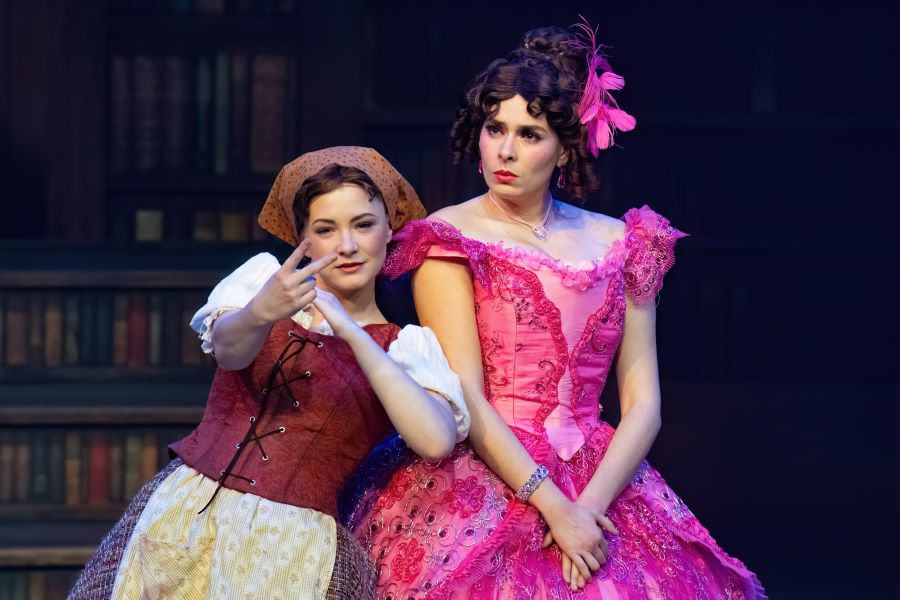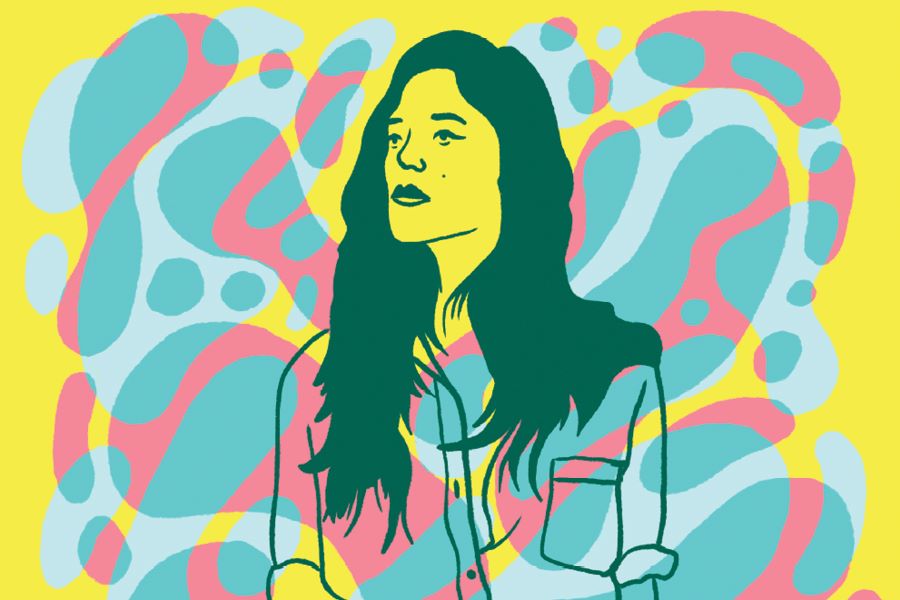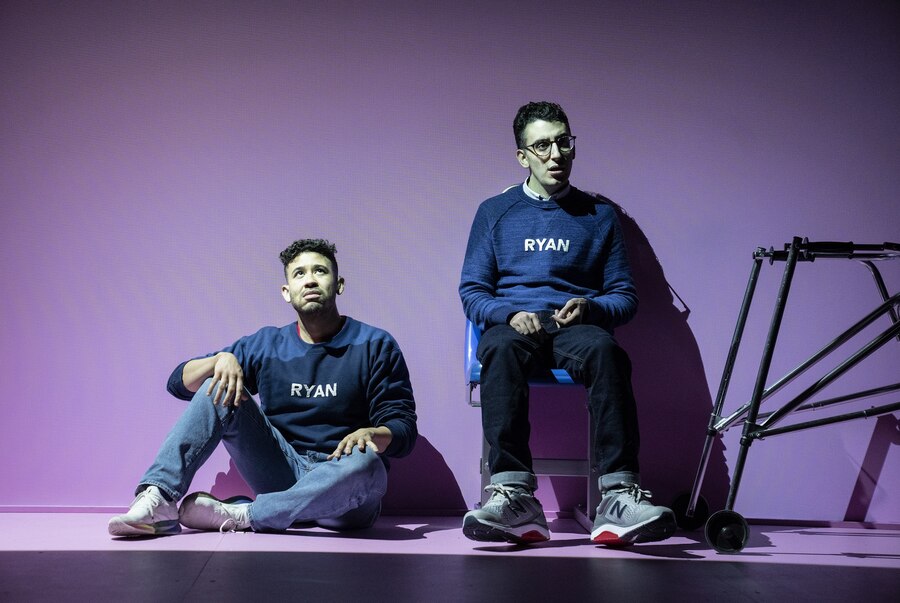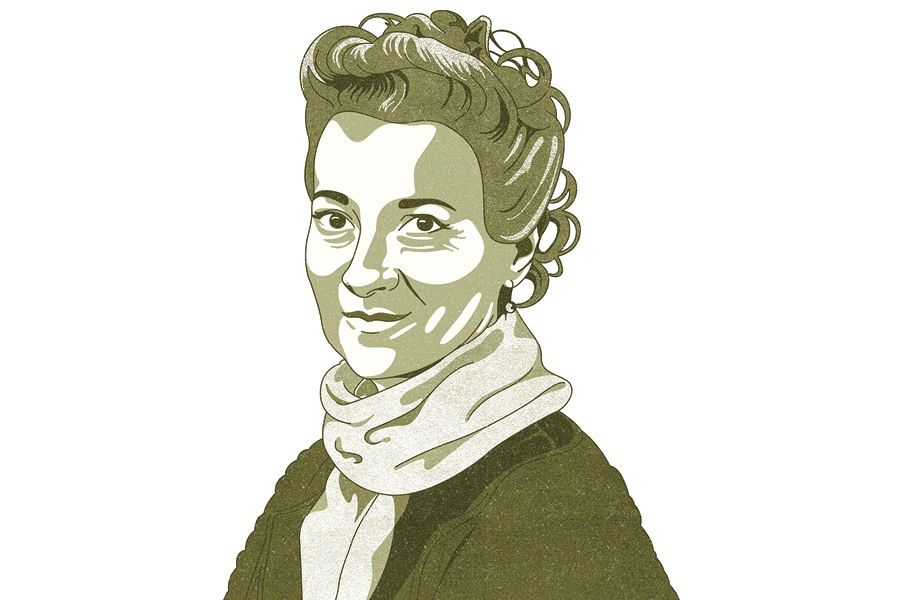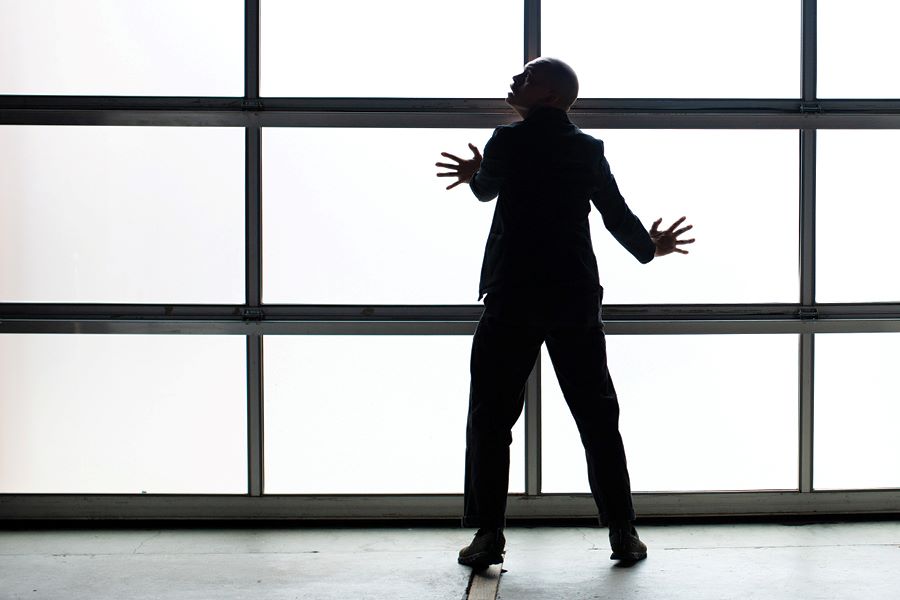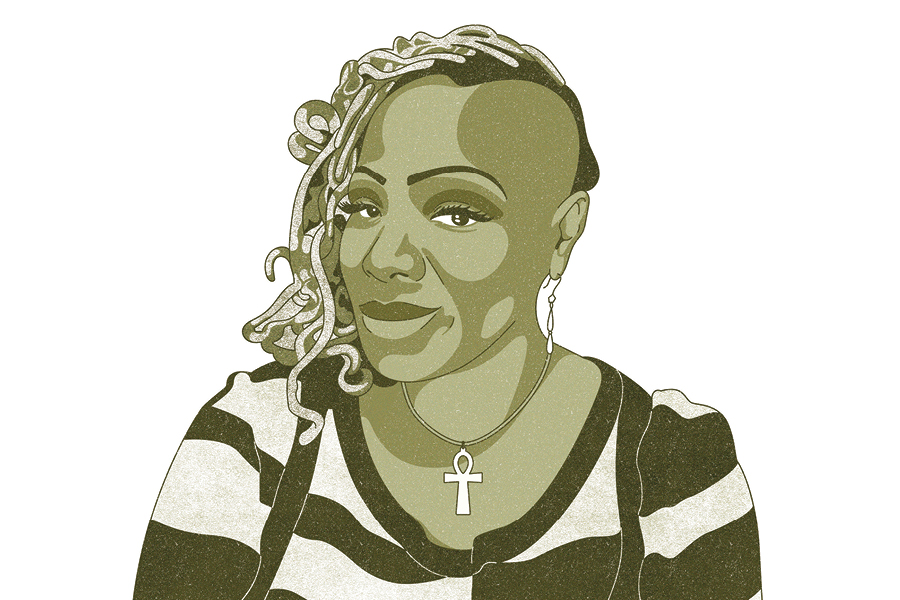Every time the disabled dance ensemble Kinetic Light wraps up a production, they leave a wave of change in their wake.
That is always their plan.
Before the ensemble agrees to perform at a venue, they talk access. The venue must have or establish accessible facilities and practices, venue staff must participate in Kinetic Light’s access training to welcome disabled and neurodivergent patrons, facilities for audiences and artists backstage must be accessible, and a quiet space must be created for neurodivergent guests or anyone who may need a break from sensory stimulation during the performance.
The ensemble begins working with a venue at least six months before a performance: educating, discussing accessible seating, sharing accessible marketing and ticketing strategies, strategizing physical access in the building, and more. Closer to performance, they set up tactile tables for patrons to interact with props, costumes, and 3D set models. They create content outlines of when and where there may be loud sounds or bright lights during a performance “for audience members who prefer to be informed about the work itself, its content, or any potential triggers/activations in advance.”
Laurel Lawson, an artist who serves as Kinetic Light’s access and technology lead, has even developed an audio description app called Audimance for blind and low-vision patrons. Their requirements make sure that the space will be accessible and hospitable for both disabled members of the ensemble and disabled patrons.
“If we didn’t require access onstage and for the audience, we’d be booked nonstop,” said Lawson. “We get turned down a lot because we’re requiring people to make change. But when we go into a house, that house is accessible afterwards, even if it wasn’t beforehand, and that is the plan. That is the reason why [we’re making art] in this hard-headed way. We’re hurling ourselves at the frontier day after day after day.”
Kinetic Light, founded in the Bay Area in 2016 with ensemble members based all across the U.S., is indeed working on the frontier of access to the performing arts. In 2018, their first touring performance, DESCENT, premiered in New York using an architectural ramp installation, which the performers use to glide across the stage. In the aerial performance Wired, developed in 2020, Kinetic Light explored the complex history of barbed wire as performers in wheelchairs flew through the air on suspended cables.
But performance is only part of their work. Kinetic Light’s access advocacy is part of a growing movement in the performing arts to move beyond special “sensory-friendly” performances and to instead create whole spaces and artworks and education programs that welcome and support people with sensory needs.
Their ultimate vision? A world where every performance is accessible for everyone.
A Culture Shift
Everything changed for Dr. Julian Maha and Dr. Michelle Kong when they took their 4-year-old son Abram to the barber in the 2010s. The sounds of the clippers and customers’ chatter, the requirement to sit still, even the feeling of his shorn hair falling onto his shoulders—it all became overwhelming for Abram, who is autistic and non-speaking, and he began to scream. Kong overheard the barbershop patrons fussing about the noise, calling her a bad parent who couldn’t control her child.
Maha and Kong avoided family outings altogether for several years after that. But eventually they’d had enough and were sure there were others with similar experiences. So they launched KultureCity, an Alabama-based nonprofit that works with businesses, cultural spaces, even whole cities as they aim to make the world more inclusive for people with sensory processing needs.
“[That’s why] we call it sensory inclusion instead of sensory-friendly,” said KultureCity management specialist Meg Raby Klinghoffer, who is autistic. “Sensory-inclusive, meaning 24/7. We want these experiences possible every day of the year. We just think the whole narrative, the whole culture needs to shift.”
KultureCity helps venues build “sensory pods,” available for patrons who need to decompress if their senses are overwhelmed. They offer trainings on working with clients with sensory processing needs, teaching methods for communication with nonverbal patrons, and ways to recognize when someone may need a quiet space.
“One in four kids and adults have a sensory processing impairment or difference,” said Klinghoffer. “A lot of people think autism immediately. What we like to champion is that it’s not just autism; [it’s] ADHD, panic, anxiety, traumatic brain injury recovery, concussion, PTSD. Really, every single person knows someone, even if they’re not aware.”
KultureCity also provides venues with “sensory kits,” which include headphones to muffle sound, special sunglasses to reduce light, visual communication cards for non-speaking patrons. The kits and the rooms allow patrons with sensory needs to attend these spaces any day of the week for any performance or event, much like ones offered by Kinetic Light.
To make it easier for patrons to find sensory-inclusive spaces, KultureCity offers a “sensory-inclusive certification” to venues that have 50 percent of their staff and volunteers trained by KultureCity. The KultureCity app lets patrons search for certified venues. The organization said they’ve certified over 1,800 venues worldwide, from large corporations like the LEGO stores to prominent theatres like the Lyric Theatre in New York and even police departments and city halls.
It doesn’t always take an outside organization like KultureCity or Kinetic Light to come in to create necessary change. In Connecticut, two sisters joined forces to make the Bushnell Center for the Performing Arts more accessible, seizing an opportunity to raise awareness among their general audiences along the way.
Catt Gruszka Vadala is the senior manager of front of house and volunteer services at the Bushnell, and her sister Lauren Tucker is a special education professor at Southern Connecticut State University. In 2015, the year before Vadala started her current role, the Bushnell held its first sensory-friendly performance.
Further Reading
Vadala immediately seized the reins, expanding the center’s sensory-friendly performances from one to several per season. Then, drawing on Tucker’s expertise in special education, the sisters created supports available at every performance for patrons with sensory processing needs. Like Kinetic Light and KultureCity, they trained Bushnell staff and created sensory kits and quiet spaces. They have also hosted “touch tours,” where low-vision and blind patrons can touch props and learn about them before a show.
“We like to look at our sensory-friendly and relaxed performances as almost like a stepping stone,” said Vadala. “We want them to be able, if they feel comfortable, to make the next step to come to our ‘typical’ performances and Broadway performances.”
The sisters are particularly proud of the communication board, with visual symbols and pictures nonverbal patrons can use to communicate. The board, which they created with the help of a speech pathologist, is included in each kit; they also created a larger version of the communication board that stays in place in the Bushnell lobby. All of those supports are highly visible for all performances at the Bushnell, Tucker said, because the goal is to “train” general audiences to be more aware of the diverse needs of theatregoers.
“My perfect world is that if my daughter is jumping down the aisle with her noise-canceling headphones and clapping a little bit, we just honor her for who she is,” said Tucker, whose daughter has unique needs. “Theatre was always my space and my love. I want [my daughter] to find that space for her, even though it might look different for her, and I want the community around her to also support her in that.”
Something for Everyone
On the outskirts of the audience for FARM! A Musical Experience, watchful stewards—also known as “perimeter people”—keep an eye out for anyone who seems particularly distressed by what’s happening onstage.
Some audience members wear headphones or fidget with squishy balls or fidget spinners. Others are on their feet, walking around or stepping out of the theatre altogether to take a break in the quiet area. Some are even onstage, dancing and singing and interacting with the performance at the invitation of the actors. Sometimes the actors step out into the audience and invite viewers to touch the props. Occasionally an actor might comment on “a loud storm coming” as a seamless warning to the audience that a flash of light or a loud sound is imminent.
All of these elements are planned parts of FARM! A Musical Experience, a play written specifically for neurodiverse children. Created by Michigan State University theatre professor Dionne O’Dell and her Sense-Ability Ensemble in 2017, the show is unique in the landscape of “sensory-friendly” performances, which are usually adapted after a show has been written, staged, and designed. Though it can be enjoyed by anyone, FARM! was expressly created to appeal to neurodiverse audiences first and foremost.
The idea formed in 2016 when O’Dell and her students were asked to assist front-of-house staff at the Wharton Center for the Performing Arts on MSU’s campus during a sensory-friendly Lion King production.
“I just kept thinking, there’s more to this,” said O’Dell, who specializes in theatre for children and neurodiverse audiences. “Somebody said at one point, there’s a big difference between, ‘All are welcome here,’ and, ‘This was created specifically for you,’ and that really speaks to me.”

O’Dell began to research. She met with Jonathan Shmidt Chapman of New York City’s Trusty Sidekick Theater Company, which created Up and Away, a production commissioned by Lincoln Center and designed for neurodivergent children in 2014. Chapman pointed O’Dell to Tim Webb, director of Oily Cart Theatre in London, which pioneered the concept of “sensory theatre” in London in 1988. So she went to London.
“I was so inspired on the plane ride back, I wrote the lyrics to the first song for our first show,” said O’Dell. “I just jumped in.”
O’Dell paired her children’s theatre expertise with Webb’s advice to partner with occupational therapists, special education teachers, and parents and students with disabilities. Soon FARM! was touring around elementary schools in the Michigan area, with O’Dell and her team learning a lot as they went.
“Every person who is neurodiverse is different,” said O’Dell. “A lot of kids who are neurodiverse don’t like loud noises. That doesn’t mean we don’t have loud noises in our show—we just offer the option to have headphones, or we warn them ahead of time.”
The same year that FARM! premiered, O’Dell attended the very first Big Umbrella Festival, a now annual weekend hosted by Lincoln Center that brings together artists, educators, and students to share new and unique approaches to multisensory performances.
“I thought after that that we would have this huge, like, burst forward,” said O’Dell. “But there really wasn’t. I think, in part, because of Covid.”
The pandemic halted the planned national tour of FARM! too, but O’Dell and her team are getting their stride again, and staged their first mixed-audience show—What If Wilhelmina, based on the book by Joseph Belisle—this past spring.
But at the moment O’Dell is more or less a one-woman show. She trains ushers and front-of-house staff, meets with audio and lighting designers, creates educational materials drawn from special education resources, and sometimes takes on design roles herself, in addition to her regular duties. In fact, she hopes to develop a minor or certificate in Theatre for Youth and Community at MSU and would like to see more inclusive training in theatre in general.
“It’s a hurdle,” she said. “It’s about resources. It’s about getting everyone on our faculty on board to say, ‘This is important. This is what we need to move forward.’ I feel like we’re still a long way off.”
There are some efforts to create standardized practices and training systems, but none are focused on training theatremakers to create for audiences with diverse sensory needs. Spectrum Theatre Ensemble’s NICE (Neurodiverse Inclusive Certified Entertainment) program, for example, trains and accredits entertainment venues to make every performance of their production seasons accessible to neurodivergent audiences. The Contemporary American Theatre Festival in West Virginia became the first NICE-certified theatre this year after implementing sensory-inclusive performances and staff training on neurodiversity, among other initiatives.
The Berklee Institute for Accessible Arts Education in Boston focuses on teaching performing and visual arts effectively to students with disabilities. The academic programs for disabled students are also connected to a masters program that aims to endow more educators with the methods and tools for teaching disabled students, with a focus on those with autism spectrum disorders.
“In the standard undergraduate music teacher licensure education program, there are not pedagogical tools for working with anyone who learns differently for any reason,” said Rhoda Bernard, managing director and assistant chair of music education at the institute. “This is a gap in one way that my institute seeks to fill.”
But O’Dell is holding out hope. After all, her experience with FARM! has changed her idea of what a “perfect show” is and how impactful theatre can be when it’s made for everyone. And as Kinetic Light’s Lawson noted, the amount of work for a single production can be intense, but it’s worth it.
“We’re creating this place for people to come together,” she said. “It’s not just changing the way someone offers access or adding a mode of access. This is social change.”
Crystal Paul (she/her), a Chicago-based writer and editor, specializes in journalism about community, race, and the arts.
More From This Issue
Support American Theatre: a just and thriving theatre ecology begins with information for all. Please join us in this mission by joining TCG, which entitles you to copies of our quarterly print magazine and helps support a long legacy of quality nonprofit arts journalism.


